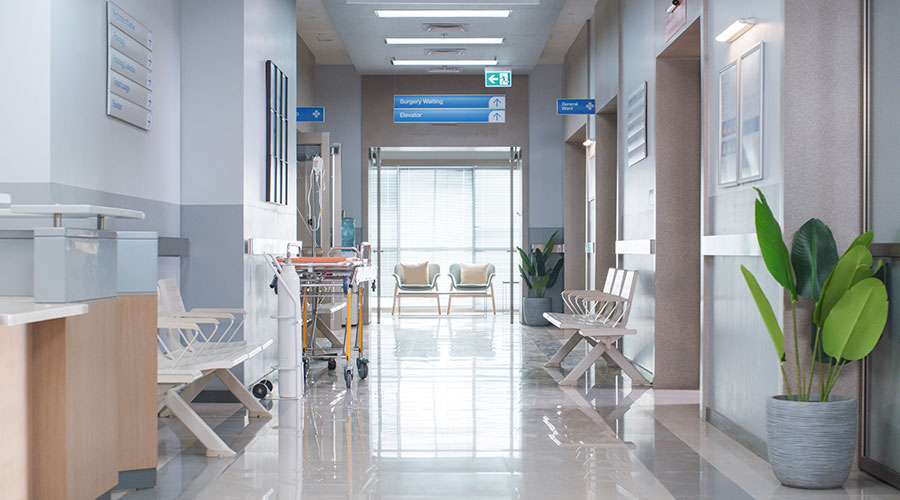The COVID-19 Response Package includes a virtual situation center for shared awareness, coordination, and tracking. It provides health systems with the abilities to set up incident command, send resource requests and assign tasks to generating after-action reports automatically.
The free response package leverages the company’s LiveProcess Emergency Manager, its widely used solution that enables hospitals and health systems to effectively prepare for and respond to disruptive events. Its comprehensive features range from hazard vulnerability analysis to mobilization of staff and resources, shared duty logs, compliance tracking, and after-action reporting. The LiveProcess Software-as-a-Service (SaaS) platform serves as the command center for emergency response, supporting real-time, shared situational awareness, both within and beyond the hospital, to engage with community partners and public health agencies.
“Our health systems are under tremendous strain and the situation changes by the minute,” said Terry Zysk, CEO, LiveProcess. “They need a reliable way to share critical information in a timely manner, whether it is supplies of PPE, employee health status or simply sharing the latest updates from the CDC. We are well-known for our emergency management capabilities, and want to offer those capabilities to any health system that needs it during this crisis.”
How Health Systems are Using LiveProcess to Manage COVID-19 Pandemic
LiveProcess customers in COVID-19 hotspots across the country – including UW Medicine Valley Medical Center near Seattle, Montefiore Health System in New York City and Riverside County Healthcare Coalition in California – are using this powerfully simple web-based system to:
- Survey staff on health status before their shifts or while in quarantine
- Find additional high-demand staff such as ICU RNs, respiratory therapists, and security personnel to meet staffing needs
- Monitor critical inventory levels and request assistance from other facilities, public health authorities and external parties
- Track ICU and isolation bed availability and staffing up to 72 hours out
- Monitor and manage staff members' potential exposure to the virus
- Share CDC and public health updates as soon as information is made available
- Report to public health agencies and healthcare coalition members
“One of the benefits of LiveProcess is that is extremely lightweight. There are no apps to install and it works on any device with a browser,” Zysk said. “And you only need a few hours to collaborate with us to get the solution configured. Rollout is easy. Health systems typically come online within days – not months. There’s no hardware to buy, no software to install, and the intuitive interface helps people get started in minutes.”
Eddie Senkbeil, Emergency Management Coordinator at Tift Regional Medical Center in Georgia agrees. His health system implemented LiveProcess about two weeks before the COVID-19 crisis hit his area.
“I haven’t been trained at all. It’s so simple,” he said. “It’s all right there. I created my own event and incident command, and we’ve been running ever since. I showed my other hospital and they love it too.”
“Since 2004, we’ve worked through all sorts of disasters – hurricanes, floods, Ebola, you name it,” Zysk said. “But the scale of this pandemic is hard to fathom. It is critical that we all do our part to support our health system. This is our way of giving back, for all that they do, all the time.”
Under the terms of the agreement, eligible health systems would be able to use the system for up to three months without further obligation. To learn more about the COVID-19 Response Package, visit www.liveprocess.com/covid-19. To learn how other hospitals and health systems use LiveProcess to prepare for and respond to pandemics, natural disasters and other disruptive events, visit the company’s blog or case studies.
April 7, 2020
Topic Area: Press Release
Recent Posts
 Oracle Health Hit by Data Breach, Patient Data Possibly Compromised
Oracle Health Hit by Data Breach, Patient Data Possibly Compromised
The incident is the latest in a growing list of third-party vendors suffering from cyberattacks.
 Ground Broken on New MD Anderson Sugar Land Facility
Ground Broken on New MD Anderson Sugar Land Facility
Anticipated to open in 2029, the five-story location will be MD Anderson’s largest Houston-area location to date.
 Florida State University Reveals Plans for Panama City Beach Hospital
Florida State University Reveals Plans for Panama City Beach Hospital
The targeted opening date is in 2028.
 The Effect of Over-Cleaning on Human Health
The Effect of Over-Cleaning on Human Health
Environmental services managers should be concerned and informed about the oral and dermal toxicity of all chemicals used in their facilities.
 Rumored Terror Threat to Hospitals Prompts FBI Warning
Rumored Terror Threat to Hospitals Prompts FBI Warning
Despite no threat, healthcare facilities are urged to review emergency preparedness protocols.